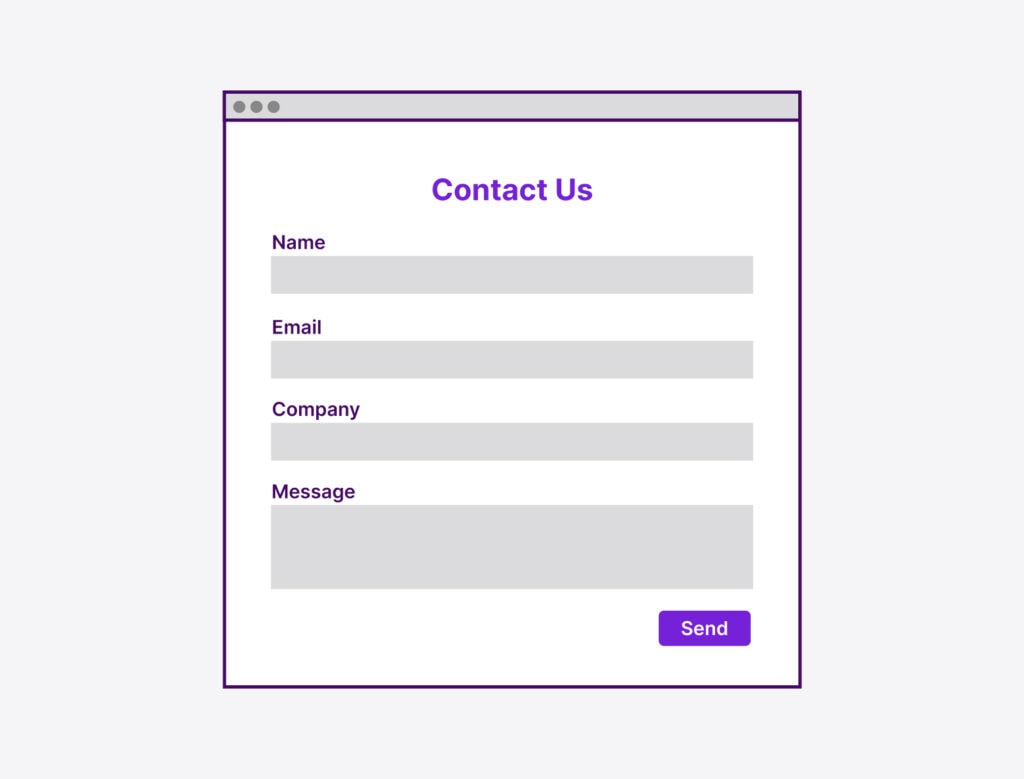Lead generation.
You think about it all the time. Talk about it with your team. You spy on your competitors for insights into their strategy.
For most companies, effective lead generation is the difference between success and failure. As long as you’re generating high-quality, targeted leads, you always have the opportunity to close new business.
But here’s the problem: Creating and managing a lead generation strategy is easier said than done. Many businesses end up turning to top lead generation companies.
If you want to take it on yourself, there’s a lot that goes into exploring your options, testing various methods, and deciding where to spend your resources in the future.
Fortunately, our ultimate guide to lead generation is here to give you a push in the right direction. Let’s get started.
What is lead generation?
Lead generation is the process of attracting prospects to your business, through various methods, with the goal of converting them into paying customers.
On the surface, it’s exactly what it sounds like.
But as you’ll learn, lead generation campaigns need to be backed by a strategy to be successful. Not only do you want leads but to generate high-quality leads. Leads that are the most likely to qualify for your services.
Let’s talk strategy for your business.
Do you really need lead generation?
This is a million-dollar question, especially if you don’t have a defined lead generation strategy.
The short answer is simple—yes.
You need a lead generation strategy to help drive business growth.
Attract a new audience
You can only “go to the well” so many times. At some point, you must take steps to attract a new audience. The strategy you employ will allow you to reach prospects that you may have overlooked in the past.
Keep your sales pipeline full
You can’t make sales when business starts to slow unless your sales pipeline of potential leads is full. And you can’t keep your pipeline full without a lead generation strategy.
Once you start lining up prospective clients, be sure to nurture active leads to keep them interested until they’re ready to work with you. One way to do this is through automated email marketing.
Increase revenue
It’s exciting to generate new leads, as you understand that it can directly lead to closing more sales.
These three points should answer the question of whether you need lead generation.
And if they don’t, I’ll say it once again: Yes, lead generation should be a big part of your growth strategy.
How does lead generation work?
Now that you understand the importance of lead generation, let’s turn our attention to the basic steps of the process itself. This will vary from company to company, based on your approach and goals, but these three steps will fit somewhere within your strategy.
1. A visitor discovers your business
This can happen in many ways, such as through your website, blog, social media platforms, or keyword search.
Your job is to get as many eyeballs as possible on your brand. Maybe this means spending more time and money on search engine optimization (SEO). Or perhaps you focus your attention on creating industry-leading blog content. The secret to success is in a combination of both.
2. The same visitor clicks on a call-to-action (CTA)
Once you hook a potential prospect, the goal is for the person to click on your call to action. This is generally a button, image, or message that asks the person to take some type of action, such as “contact us” or “apply today.”
Tip: Experiment with and A/B test various CTAs to determine which one generates the best results. Web copy is influential to readers, believe it or not.
3. That visitor lands on a page with more information
This page has a major impact on the effectiveness of your lead generation strategy. It’s designed to capture lead information in exchange for an offer.
For example, you could request that the person share their name, company name, and email address in exchange for a free, downloadable ebook on a subject of interest. This is often referred to as a lead magnet.
Creating a lead magnet could be as simple as stringing some of your successful blog posts together to create an informative guide.

The key to success is offering something of value in exchange for the person’s contact information. The more value your offer provides, the more willing your visitors are to share information on themselves.
For example, if you work in an industry with hard-to-understand jargon, create a beginner’s guide, such as “The Beginner’s Guide to Mortgages” or “The Beginner’s Guide to Personal Injury Lawsuits.”
In simple terms—a visitor clicks a CTA that takes them to a landing page where they share information to receive an offer, which is when they become a lead. Additionally, get rid of clunky and outdated forms in favor of progressive forms.
You want this process to be as frictionless as possible. The easier it is for a prospect to move through these steps, the greater chance there is of converting them to a lead.
How to generate qualified leads
We can talk as much as we want about the importance of lead generation, but none of that matters unless you have a results-driven plan.
Try out a new method, measure the leads generated, and repeat what works. That’s the secret sauce.
What you don’t want to do is fall into the trap of believing that your current approach is as good as it gets. Practice lead scoring for each method to find out which one gets you more quality leads.
Keep an open mind, as you could be overlooking a method that can earn you more leads.
Let’s look at some of the most common ways to generate qualified leads.
1. Social media marketing
Social media is a broad term that encompasses various platforms such as Twitter, Facebook, LinkedIn, Instagram, and TikTok.
The way you generate leads via social media depends on the platform you’re using. For instance, Twitter is a popular choice among many B2B marketing professionals. This is due in large part to its “Lead Generation Card,” mostly referred to now as simply “Twitter Cards”
There’s a lot to like about this approach, including the ease of setup, lead collection options, and access to analytics. Here’s what Twitter has to say:
Basic setup now takes just minutes from start to finish, and you can download your leads straight from Twitter Ads into a CSV spreadsheet. Or, you can also arrange for incoming leads to be instantly updated in your CRM system.
How simple is that? You can generate leads via Twitter and have them instantly transferred to your CRM system.
Facebook is another social platform with tools designed for lead generation, such as its “Lead Ads.” Here’s how the company defines this tool:
Facebook lead ads make the lead generation process easy. People can simply tap your ad and a form pops up—it’s already pre-populated with their Facebook contact information and ready to be sent directly to you. With just a few taps, they can get the information they want, and you generate a qualified lead for your business.

This is another example of the simplification of lead generation via social media. The tools are available. You simply need to take advantage of them.
Aside from the ad options on social platforms, you should take advantage of your social pages by sharing your blogs and newsletters with that audience. It will drive more traffic to your website and keep your page active so that people know they can contact you.
2. Pay-per-click (PPC) advertising
If you believe that it “takes money to make money,” PPC advertising is right up your alley.
Google Ads is the most popular form of PPC advertising, but all the most well-known social media platforms offer this option as well.
The primary drawback of PPC advertising is that there’s no guarantee that your money will result in a lead or sale. Additionally, it’s common to lose money until you gain a sound understanding of what types of ads resonate with your audience.
On the plus side, PPC advertising allows you to reach your target audience with less effort. In simple terms, you’ll create an ad, wait for people to click, and let your landing page do the rest of the work.
There are many important metrics associated with PPC advertising, but none are more powerful than the return on investment (ROI). If you’re spending more money than you’re generating in return, something needs to change.
3. Search engine optimization (SEO)
In many ways, SEO is the opposite of PPC as it allows you to generate leads organically.
Rather than bid on keywords and pay every time someone clicks your ad, you focus your resources on moving to the top of the search engine results page for your target keywords.
This is typically done through original content (blogs, infographics, videos, etc.) that you create, optimize, and post on your website.
And when that happens, you’re in a position to generate free traffic to your website day after day.
For example, you may want to target first-time home buyers looking to get an FHA loan. You’ll write a blog called “How to Use an FHA Loan to Buy Your First House,” and include relevant keywords associated with a Google search for FHA loans.
That way, when a prospective customer searches that term, you’ll have a chance at showing up on the search engine results page (SERPs)
This content will remain on your website for as long as you want it to, bringing in traffic, whereas ad campaigns typically have an end date.
Tip: Reaching the top of the search engines is an accomplishment, but there’s no guarantee your page will maintain its ranking forever. SEO maintenance is required.
4. Referrals
These come about when a new lead is introduced to your company by a third party, such as a current customer.
By providing high-quality service, professionals in any industry increase the chance that a customer will share their experiences with friends, family members, and others. And when that happens, the odds of referral business go through the roof.
This is why it’s important to cultivate a relationship with clients, even after you’ve closed their deals. Send relevant updates, newsletters, or even personal notes to check-in.
Tip: Don’t hesitate to ask satisfied customers for referrals. Most people are more than willing to share your contact information when applicable.
Download Kaleidico’s Lead Generation Framework.
How to improve lead generation
Even if you have had lead generation success in the past, there’s always room for improvement. There are always things you can experiment with in hopes that they generate more significant results.
1. Experiment with new methods of lead generation
If you’ve focused all your time on social media to date, turn some of your attention to SEO and PPC advertising. You’re closer than you think to opening a new world of opportunities. And this new world may generate better results.
Tracking your efforts and results allows you to pin down the lead generation methods that best position you for success. A/B testing for lead generation is a useful tactic that shows you what works and what doesn’t so that you can adjust your strategy accordingly.
2. Use lead generation software tools
There’s a software tool for almost everything in today’s day and age, and that definitely holds true with lead generation. You can use tools for tasks such as:
- Designing landing pages
- Creating lead capture forms
- Managing your lead flow
- Tracking visitor activity
If you host your site on WordPress, for example, many widgets are available that help with these various tasks.
3. Change your offer
An offer that was intriguing to your audience yesterday may not do much for them tomorrow. Regularly test new offers to determine which ones generate the best response.
Take for example an ebook titled “How to Buy Life Insurance During the COVID Pandemic.” When the pandemic was in full swing, this may have been the perfect offer. It provided your target audience with relevant and timely information.
However, now that the pandemic is part of everyday life, this ebook probably won’t perform as well. You must update and change your offer. A more fitting title may be “How to Buy Life Insurance in a Post-COVID World.” This has a better chance of resonating with prospects.
Why not just buy leads?
This is a common question that doesn’t have a one-size-fits-all answer. There are times when buying leads is useful. There are also times when it’s a waste of money and manpower.
The first two things you need to know about buying leads are:
- You’re spending money upfront on a lead that isn’t guaranteed to convert
- Not all leads that you purchase are high-quality leads
In other words, you could continually spend money on dead-end leads because you assume that the “tide will turn” soon enough.
If you’re going to buy leads, be sure that you’re spending a reasonable amount of money and receiving something of great quality in return.
There are benefits of buying leads, such as:
- More control over the number of leads
- Less time spent on other methods of lead generation
- It’s easy to ramp up and slow down as your schedule allows
If buying leads doesn’t pique your interest, that’s okay.
Leave this to your competitors and focus on other means of lead generation such as social media and PPC advertising. This option will always be there if you wish to take advantage in the future.
Learn more about lead generation with Kaleidico.
Five lead generation tips you’re overlooking
You know the basics, but sometimes it takes more than that to succeed. Sometimes you need to dive into methods that you’ve previously ignored or didn’t realize existed.
1. Your offer is what matters
Nobody wants to share their contact details in exchange for a poorly constructed and/or underwhelming offer. They’ll simply pass over it and continue their search elsewhere.
You can do everything else right, but if your offer leaves a lot to be desired you won’t get anywhere. Spice up your current offer and watch your number of leads grow.
Wondering how? Review your current offer and make a list of how you can take it to the next level. Sticking with the ebook example above, here are some ideas:
- Edit it to include updated information.
- Include a downloadable asset, such as a checklist.
- Promise a surprise bonus gift.
You get the point. It’s not good enough to have just any offer. It needs to be an enticing, industry-leading offer. This is what moves the needle.
2. Link your CTA to a dedicated landing page
CTAs should send visitors to a landing page where they learn more about your offer or a contact form. This is also the place where they can take action.
Don’t use CTAs to drive traffic to your homepage or another unrelated page. Sure, you may get some leads out of this, but not nearly as many as you would with a dedicated landing page.
A/B test several unique landing pages to determine which one performs best.
3. Get everyone involved
This is a simple one but it’s often overlooked. Don’t put one person in charge of lead generation. Make everyone in the company aware of how important it is, ranging from your sales and marketing teams to customer service.
Even if you’re a small business, and don’t have a dedicated marketing department, lead generation should be a focus for everyone. You want everyone pulling in the same direction towards the same goal.
4. Maintain your flexibility
When trends change and behaviors shift, your lead generation strategy should follow suit. Without flexibility, you’ll eventually begin to waste time, money, and other resources chasing leads that you have no chance of capturing.
5. Make it a priority
This should go without saying, but it’s often overlooked. If you want to generate leads, it needs to be a priority. The best lead generation strategy is one that’s driven by consistency.
Improve your lead generation strategy
The more time you spend on lead generation the more questions you’ll have. And that’s not a bad thing. Chasing after answers gives you the knowledge needed to make more informed decisions in the future.
While the questions never stop, here are 10+ you should answer today based on your current situation, past experiences, and goals.
- Are you generating leads in-house? Have you considered hiring an external lead generation company to assist with the process? Would a hybrid approach work best?
- How do you marry lead generation and demand generation to enhance results?
- What’s your lead generation budget? How do you track it to ensure that you don’t overspend (or underspend)?
- What are your most important lead generation metrics? What’s the best way to track these metrics? How will they impact future decisions?
- Who’s the best person to manage a lead generation campaign for your company?
- What’s your plan for nurturing and closing leads once they’re added to your pipeline?
- Are you generating quality leads or just leads? Do you understand the difference?
- Is lead generation a sales activity, marketing activity, or a combination of both?
- What tools and software do you use throughout the lead generation process?
- How much does it cost to purchase leads in your industry? Is it worth it?
These questions aren’t always easy to answer. In fact, it can be downright challenging to address some of these. Not to mention the fact that the more questions you answer the more questions you’ll have.
Just remember, questions aren’t a bad thing. They’re learning opportunities, and along with that comes the ability to adjust your strategy for better results.
Next Step: Build a lead generation strategy for your business
It doesn’t matter if you’re in the mortgage business, legal industry, or some other space, qualified leads are critical to reaching and exceeding your goals.
The information above will put you on the right path but don’t stop there.
Kaleidico is a lead generation agency with over 15 years of experience generating leads for mortgage lenders, law firms, and other types of businesses.

